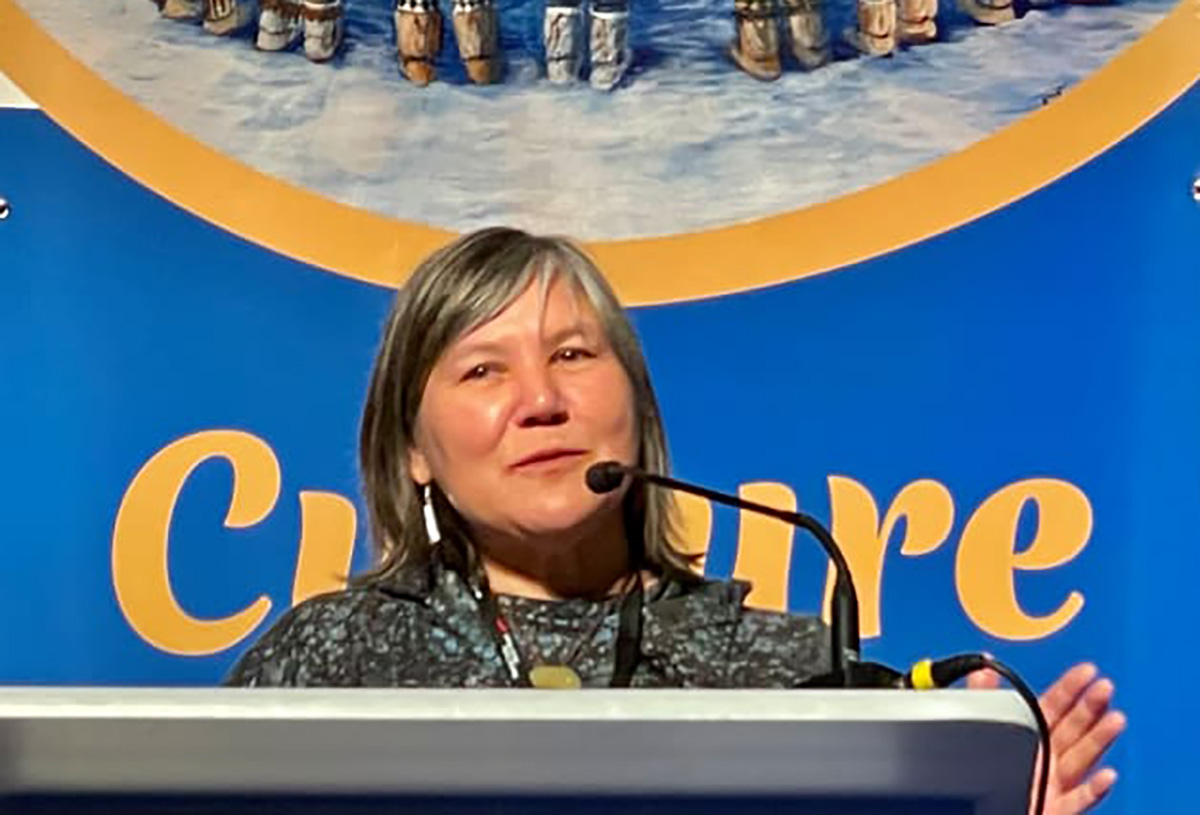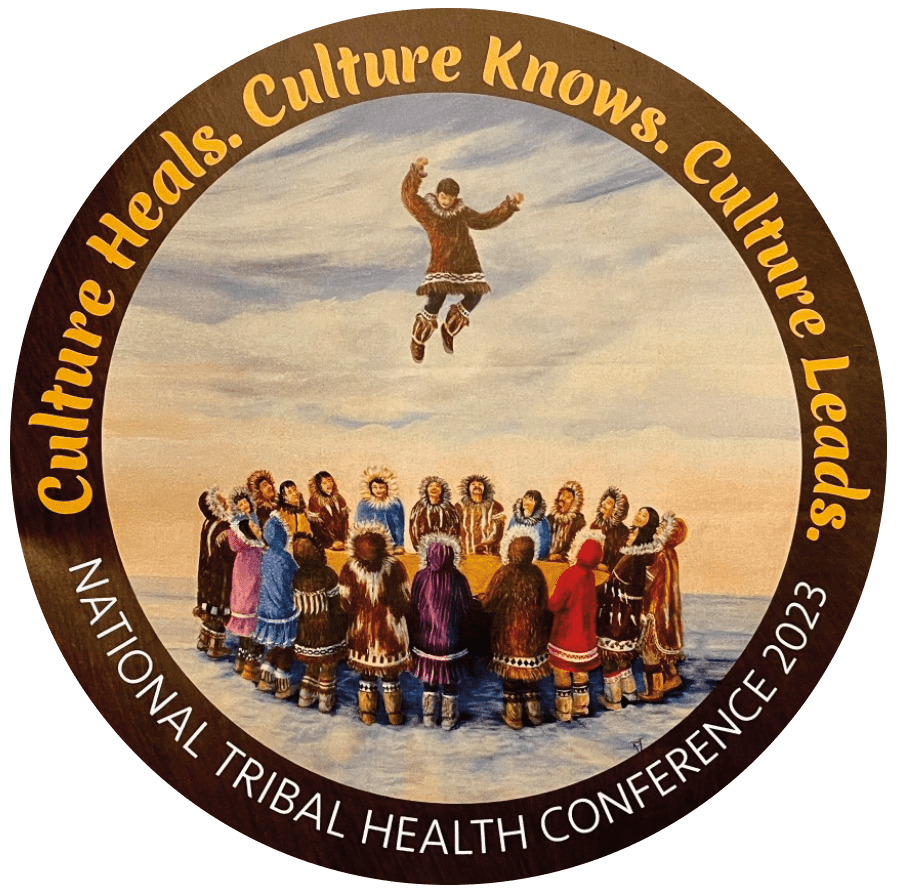
Valerie Nurr’araluk Davidson, Yup’ik, keynote speaker at the National Indian Health Board annual conference held in Anchorage in May.
National Panel Praises Alaska Tribal Health System Successes
However, there is a path to success, said Alaska tribal health leaders.
“When we provide care as close to home as possible, and in the language and the cultural norms of the people that we serve, we know we have much better health outcomes. We see that time and time and time again,” said Alaska Native Tribal Health Consortium President and CEO Valerie Nurr’araluk Davidson, Yup’ik.
During her keynote address and a following panel discussion, participants heard success stories about the Alaska Tribal Health System, an affiliation of Tribes and tribal health organizations with approximately 12,000 employees serving more than 170,000 tribal citizens.
Alaska Tribes and tribal health organizations began assuming management of Indian Health Service programs in the 1970s under the Indian Self-Determination and Educational Assistance Act. Then in 1994, 26 of them signed the Alaska Tribal Health Compact, which authorizes them to operate health and health-related programs through a government-to-government agreement with the U.S. Indian Health Service.
This compact was one of the first such multi-party agreements in the nation, said panelist Alberta Unok, Yup’ik. She’s president of the statewide advocacy organization the Alaska Native Health Board.
The Alaska Tribal Health System provides statewide coordination of care, she said. “Collectively, it forms an integrated health network providing healthcare services at the village clinic, regional hubs, and at the Alaska Native Medical Center.”
“There are 229 Tribes here in Alaska. In our system, managed by Alaska Native people for Alaska Native people, we take a culturally responsive approach to promoting wellness and are pleased to see the theme of the overall conference embodied in cultural recognition, promoting traditions such as Native languages, storytelling, songs and dances, traditional foods, plants. These are some of the best medicines for treating our people in a holistic manner,” Unok said.
Having Alaska Native leadership setting priorities and making funding decisions to provide culturally appropriate care has made a world of difference over having a system run by the Indian Health Service, said Davidson.

“As soon as that door closed, within seconds we would hear screams of our friends, our siblings, literally blood-curdling screams. And when those screams stopped and the door opened, we would see the dentist, who wore a butcher’s apron in those days, literally covered in blood. And he would say, ‘next.’
“And our friend or sibling would come out holding their face, crying. And we would ask one question. And that one question was ‘How many?’ We were asking ‘how many teeth got pulled?’ Because that’s what happens when you live in a community that doesn’t have access to oral healthcare. And the most I remember is eight, eight teeth pulled from a little guy. And the reason I remember that so vividly is because that was my older brother,” she said.
“Incredible traumatic experiences happened in our early childhood. To this day, we have family members who cannot see a dentist without being put under, without being completely, completely knocked out under anesthesia because it is such an incredibly traumatic experience for them,” Davidson said.
Tribal leaders created the Dental Health Aide Therapist program in 2004. The therapists train for two years before working in underserved communities to prevent and treat oral disease. They are authorized to apply sealants and perform examinations, fillings, and uncomplicated extractions, all under the supervision of a dentist.
The dental therapist program is modeled after the community health aide program, in which para-professional providers work under the supervision of a physician to provide emergency and primary care at village clinics. If needed the patient might get transferred to a sub-regional clinic or regional hospital to see a doctor. For specialty services, the patient may receive care during a field clinic or via telemedicine, or travel to the Alaska Native Medical Center, a 172-bed facility in Anchorage.
At the center, “we do audiology; cardiology; colorectal cancer screening; ear, nose and throat; neurosurgery; oncology; hematology; and all of the ‘-ologies.’ We also do pediatrics. We do critical care, internal medicine, surgery, et cetera,” Davidson said. The consortium also offers other statewide services, in environmental health and engineering, community health, and information technology.
The medical center is run by the consortium and Southcentral Foundation, which provides primary care to residents of south central Alaska, where half of Alaska’s population lives. Foundation President and CEO April Kyle, an Athabascan descendent, told the audience of a few hundred people, “We have 2,600 employees and we serve 70,000 Alaska Native people in our region. Our vision is a Native community that enjoys physical, mental, emotional, and spiritual wellness. “I want to be driven by the voice of Alaska Native people and families and communities who tell us what matters to them,” Kyle said.
“When I look at the old hospital [run by the Indian Health Service], they tell me there was family medicine, right? There were five family medicine providers. I don’t remember that. As a kid we couldn’t get an appointment. We all went to the emergency room,” she said.
The foundation redesigned the system to align with the priorities of their customer-owners. “We launched same-day access to primary care 20 years ago, integration of behavioral health in a primary care setting 18 years ago, this really big continuum of behavioral health services. I’ve been with SCF for 20 years and it’s been my honor to be part of how we’ve listened to the community and continued to design our services as best to meet their needs,” Kyle said.
40th Annual Statewide Elders & Youth Conference
(LINGÍT)
“Let it be that we heal each other”